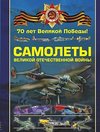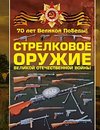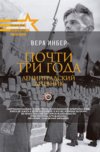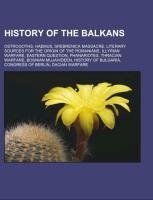
History of the Balkans
Source: Wikipedia. Pages: 118. Chapters: Ostrogoths, Haemus, Srebrenica massacre, Literary sources for the origin of the Romanians, Illyrian warfare, Eastern Question, Phanariotes, Thracian warfare, Bosnian mujahideen, History of Bulgaria, Congress of Berlin,... Viac o knihe
Produkt je dočasne nedostupný
24.99 €
bežná cena: 28.40 €
O knihe
Source: Wikipedia. Pages: 118. Chapters: Ostrogoths, Haemus, Srebrenica massacre, Literary sources for the origin of the Romanians, Illyrian warfare, Eastern Question, Phanariotes, Thracian warfare, Bosnian mujahideen, History of Bulgaria, Congress of Berlin, Dacian warfare, Varna Necropolis, Bulgarian Exarchate, Illyrian Provinces, Balkan Federation, Women in Yugoslavia, Paleo-Balkan mythology, Bryges, Municipium Iasorum, Varna culture, Historical regions of the Balkan Peninsula, Balkan Pact, Ottoman territories in Europe, Corpus separatum, San Girolamo dei Croati, Tombstones of Duke Momcilo, The Balkans Since 1453, Muhajir, Reichstadt Agreement, The Case for Kosova: Passage to Independence, Bulgarian Crisis, Cheta, Paleo-Balkans. Excerpt: The Srebrenica massacre, also known as the Srebrenica genocide, refers to the July 1995 killing, during the Bosnian War, of more than 8,000 Bosniaks (Bosnian Muslims), mainly men and boys, in and around the town of Srebrenica in Bosnia and Herzegovina, by units of the Army of Republika Srpska (VRS) under the command of General Ratko Mladic. The mass murder was described by the Secretary-General of the United Nations as the worst crime on European soil since the Second World War. A paramilitary unit from Serbia known as the Scorpions, officially part of the Serbian Interior Ministry until 1991, participated in the massacre and it is alleged that foreign volunteers including the Greek Volunteer Guard also participated. In April 1993, the United Nations declared the besieged enclave of Srebrenica in the Drina Valley of north-eastern Bosnia a "safe area" under UN protection. However, in July 1995, the United Nations Protection Force (UNPROFOR), represented on the ground by a 400-strong contingent of Dutch peacekeepers, Dutchbat, failed to prevent the town's capture by the VRS and the subsequent massacre. In 2004, in a unanimous ruling on the "Prosecutor v. Krstic" case, the Appeals Chamber of the International Criminal Tribunal for the former Yugoslavia (ICTY), located in The Hague, ruled that the massacre of the enclave's male inhabitants constituted a crime of genocide. The forcible transfer of between 25,000 to 30,000 Bosniak women, children and elderly which accompanied the massacre was found to be confirming evidence of the genocidal intent of members of the VRS Main Staff who orchestrated the massacre. Theodor Meron, the presiding judge of the Appeals Chamber, stated: In February 2007 the International Court of Justice (ICJ) concurred with the ICTY judgement, stating: The ICJ ruled that neither Federal Republic of Yugoslavia nor modern Serbia was guilty of genocide, however it also ruled that Serbia "had violated the obligation to prevent genocide" and that Serbia
- Vydavateľstvo: Books LLC, Reference Series
- Formát: Paperback
- Jazyk:
- ISBN: 9781157603023


 Anglický jazyk
Anglický jazyk 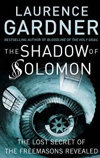



 Ruský jazyk
Ruský jazyk 